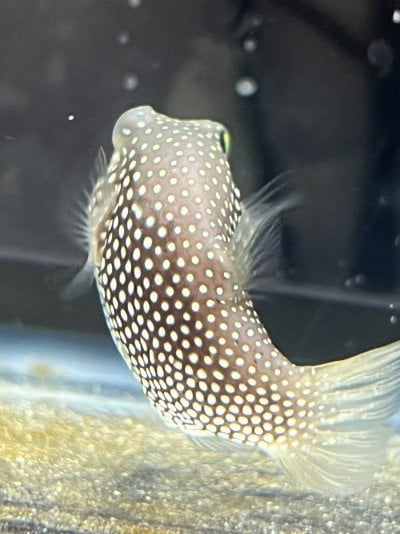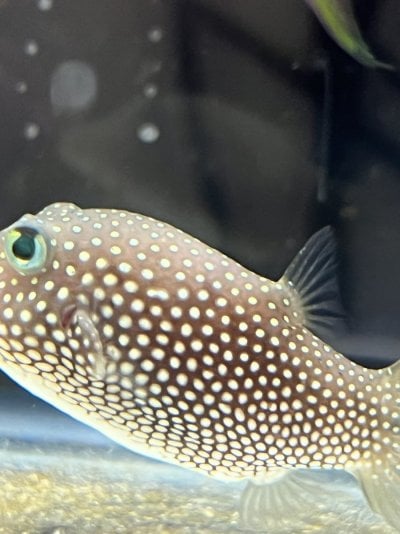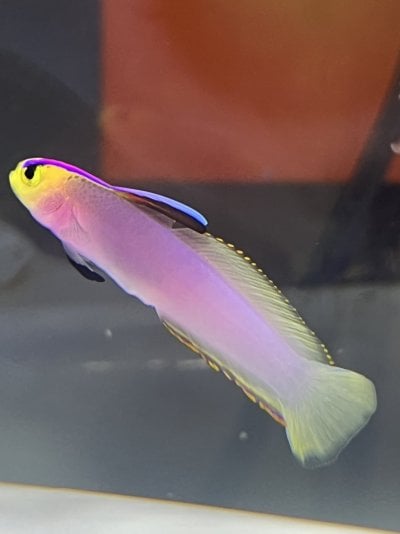Hey all. We got a Hawaiian spotted puffer which was added to a newly setup QT 4 days ago (1.023 gravity, HOB filter, powerhead and air stone available but not always used). We've gone the observation route first so no treatment has been given. We just noticed a few black spots on the puffer (and some discoloration on various areas of the skin). Never had a puffer so I'm less familiar with what is normal. Is this disease (e.g., turbellarians)? Spots have stayed in the same location for the past 3 days or so.
1. if disease, what would be a recommended treatment for a puffer? I have heard they don't tolerate copper very well. Is hyposalinity (1.009 gravity) a better approach? If so, for how long?
2. QT is shared with a Sunburst Anthias, so if it is disease, I assume the Anthias has been exposed. Would treatment be the same for both or do I need to separate them and treat differently?
3. Both fish are eating well with no other apparent symptoms.
Thanks for your help!
-JD
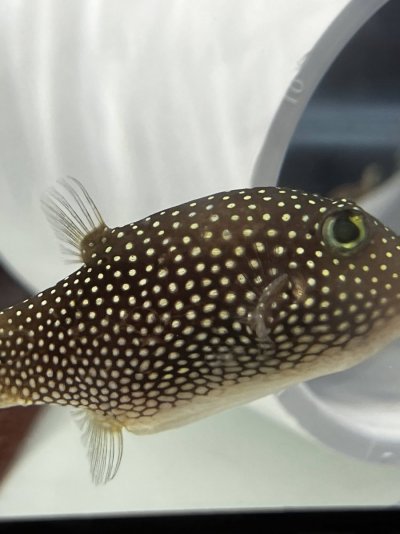
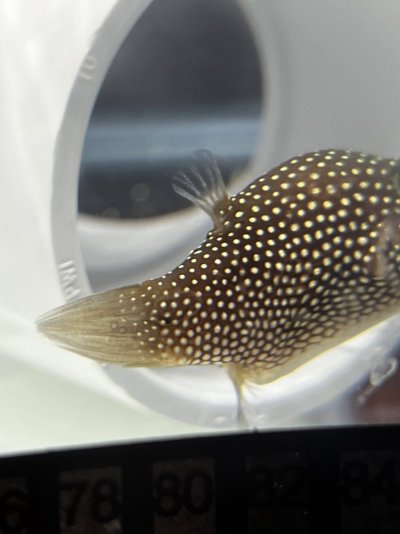
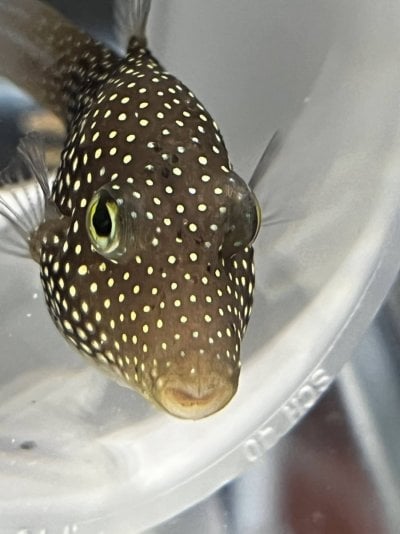
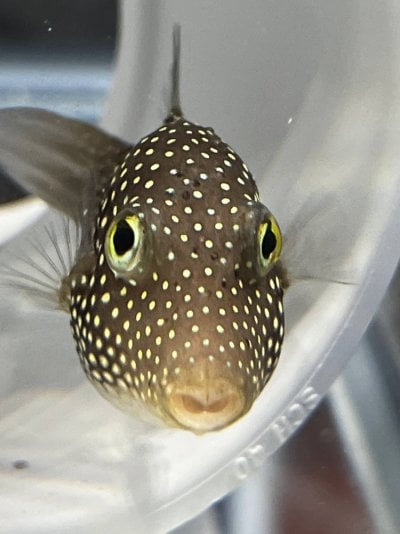
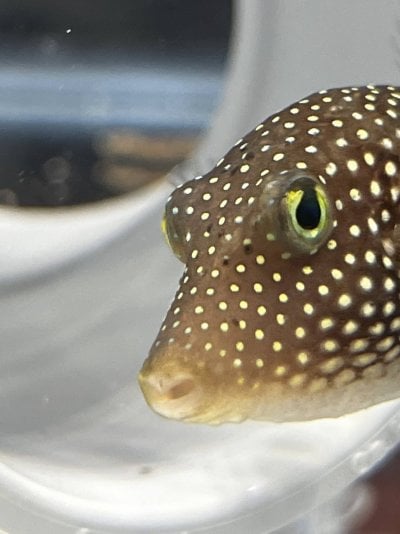
1. if disease, what would be a recommended treatment for a puffer? I have heard they don't tolerate copper very well. Is hyposalinity (1.009 gravity) a better approach? If so, for how long?
2. QT is shared with a Sunburst Anthias, so if it is disease, I assume the Anthias has been exposed. Would treatment be the same for both or do I need to separate them and treat differently?
3. Both fish are eating well with no other apparent symptoms.
Thanks for your help!
-JD











